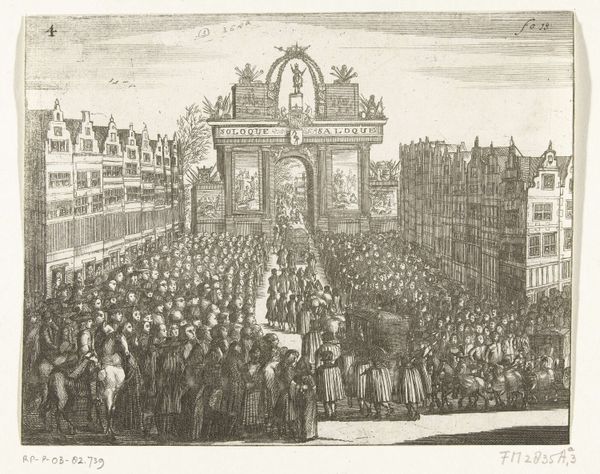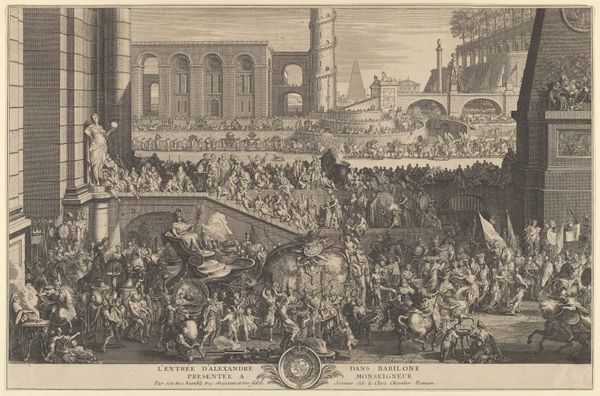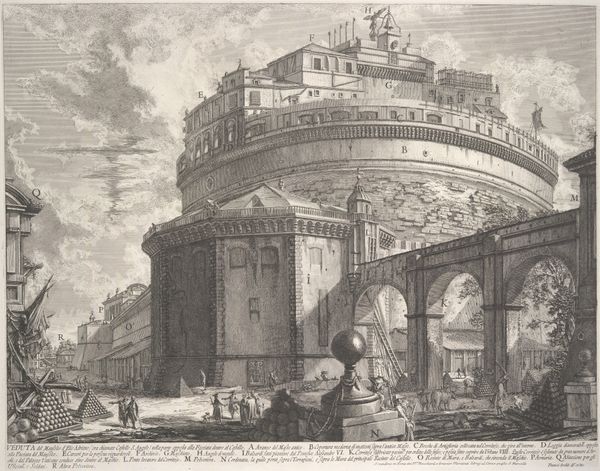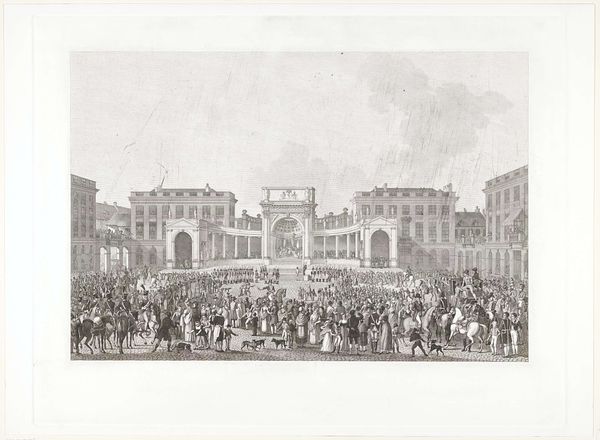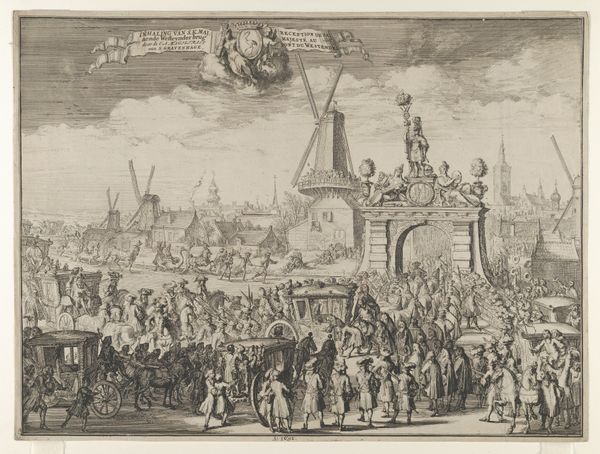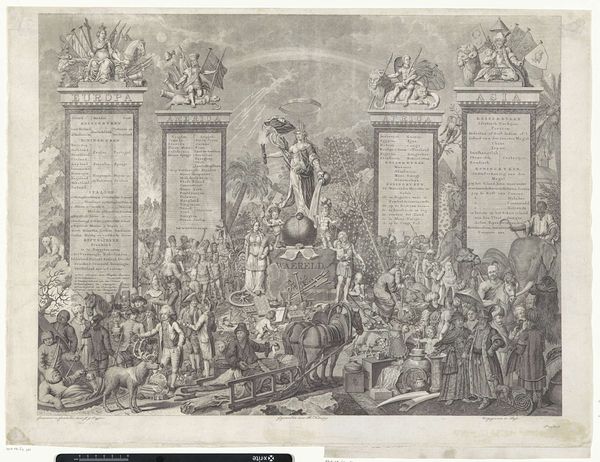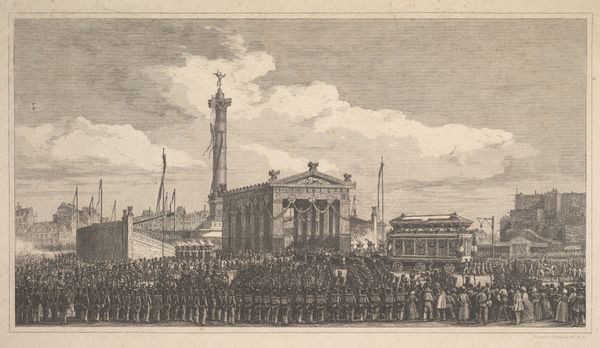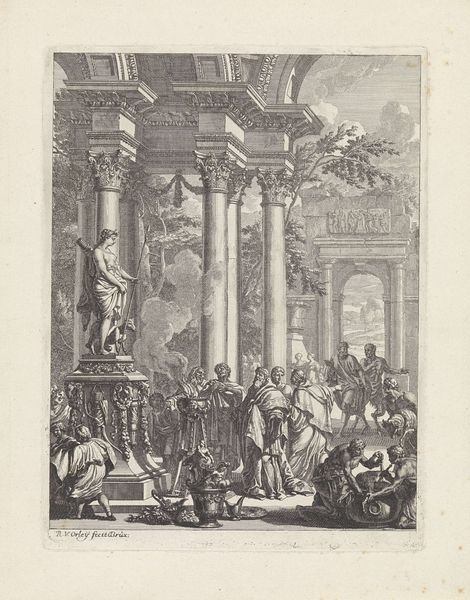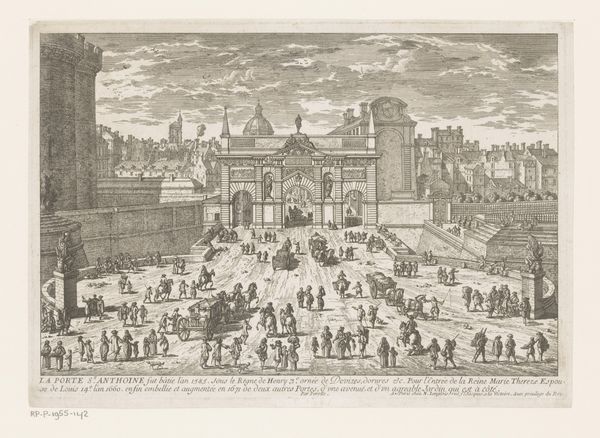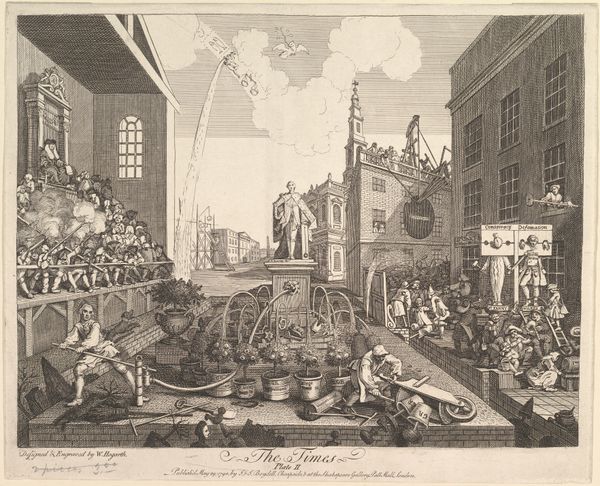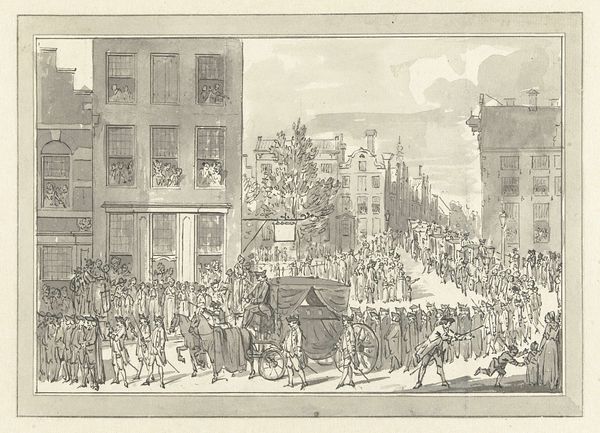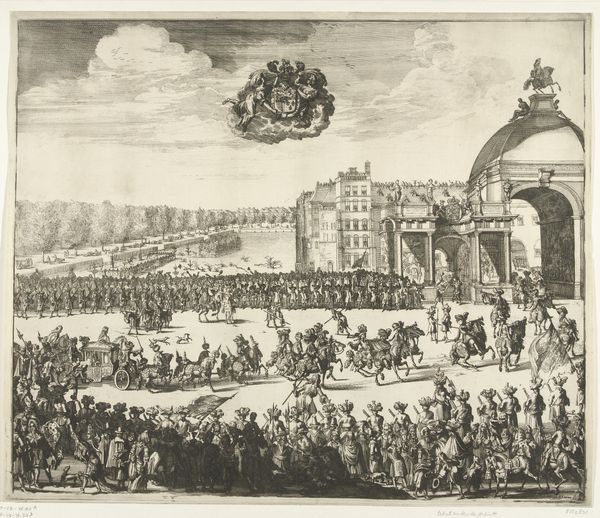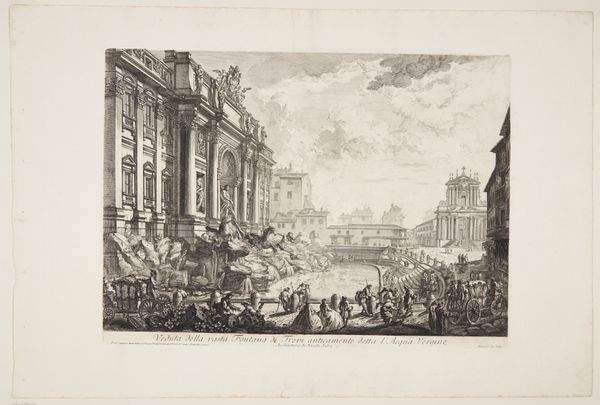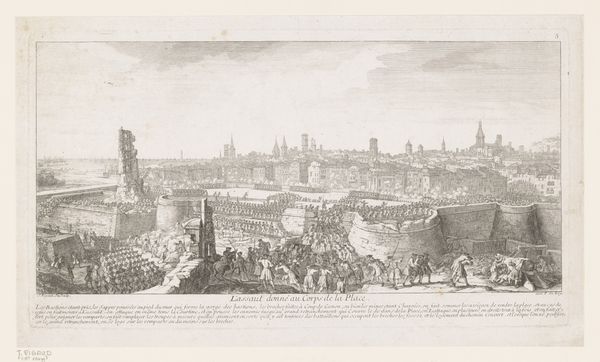
print, engraving, architecture
#
neoclacissism
# print
#
landscape
#
classical-realism
#
figuration
#
form
#
line
#
cityscape
#
history-painting
#
engraving
#
architecture
Dimensions: height 450 mm, width 636 mm
Copyright: Rijks Museum: Open Domain
Curator: This is Luigi Rossini’s "Titelprent met triomfboog en triomfstoet te Rome," created as an engraving in 1835. Editor: It's strikingly intricate. The density of detail, the sheer number of figures… it evokes both a sense of grand celebration and almost oppressive monumentality. Curator: The triumphal arch motif has always been laden with symbolism, tracing its roots back to Roman power and imperial ambitions. How does Rossini utilize this loaded signifier in his rendering? Editor: The arch becomes this focal point, right? But also an active site. We see a procession flowing through it, under its symbolic weight, becoming implicated in the narratives of conquest and power inherent to the Roman Empire. Curator: Indeed. By the 19th century, Rome represented a complex convergence of artistic fascination and political weight. This image allows us to dissect prevailing attitudes regarding nationhood and its historical lineages. The artist’s commitment to neoclassical ideals offers a unique window into the cultural dynamics of that era. The image serves to both revere and potentially question the legacy of Roman imperialism within a shifting European landscape. Editor: Precisely! I find the symbolic echoes incredibly potent. The torches, the statuary atop the arch, the very form… all build on archetypes embedded deeply within Western cultural memory, shaping how we perceive power, triumph, and civic identity. It creates such a visual richness to read the composition. Curator: And what of the relationship between gender and power represented in the image? Do you feel the composition is upholding or subverting traditional hierarchies? Editor: Primarily upholding, I’d say. It adheres to very specific performative behaviors. Look at the placement of the leaders at the top of the arch…their gestures seem intended for the masses, underscoring Roman ideas about masculinity, spectacle and dominance. Curator: The artist compels us to engage with that very dynamic: this interplay between tradition and emerging discourses surrounding power. Thank you for shedding such fascinating light on this work. Editor: It’s been a pleasure—Rossini prompts critical investigation of these pervasive symbols within society, urging us to contemplate their evolving meaning.
Comments
No comments
Be the first to comment and join the conversation on the ultimate creative platform.
